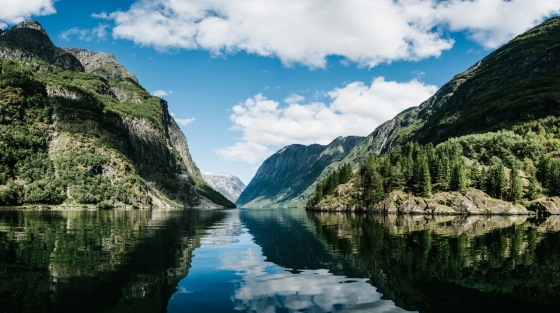Hardbakke Rainfall & Precipitation: Monthly Averages and Year-Round Insights
This page shows both the average monthly rainfall and the number of rainy days in Hardbakke, Sogn og Fjordane, Norway. The figures are based on a 30-year period (1990–2020) to provide a reliable average. Now, let’s explore all the details to give you a full picture.
Hardbakke is known for its substantial rain/snowfall, with annual precipitation reaching 2559 mm.
Monthly Precipitation Levels
The average number of days each month with precipitation (> 0.2 mm)
Hardbakke can be quite wet during December, receiving approximately 301 mm of precipitation over 29 rainy days.
In contrast May, experiences much drier conditions, with 112 mm of rainfall, spread across 18 rainy days.December, the wettest month, has a maximum daytime temperature of 7°C. During the driest month May you can expect a temperature of 10°C. For more detailed insights into the city’s temperatures, visit our Hardbakke Temperature page.
Annual Precipitation in Norway
The map below shows the annual precipitation across Norway. You can also select the different months in case you are interested in a specific month.
 heavy rainfall
heavy rainfall
 high
high
 moderate
moderate
 low
low
 almost none
almost none
Amsterdam Precipitation Compared World Wide
Hardbakke’s average annual precipitation is 2559 mm. Let’s compare this to some popular worldwide tourist destinations:
The city of Rome, Italy, has an average annual precipitation of 832 mm, spread fairly evenly throughout the year.
Beijing, China, receives 560 mm of annual precipitation, concentrated in the summer months.
In Tokyo, Japan, the average annual precipitation is 1528 mm, with significant summer rains due to typhoon season.
Mumbai, India, experiences a tropical monsoon climate with 1860 mm of annual rainfall, with the majority of precipitation happening during the monsoon season from June to September.
How is Precipitation Measured?
Precipitation amounts are measured using specific gauges installed at weather stations, collecting both rain and snow and any other type of precipitation. Rainfall is measured directly in millimeters, while that from snow and ice is obtained by melting it. Automated systems often incorporate heaters to make this easier.
Information from these stations is transmitted via Wi-Fi, satellite, GPS, or telephone connections to central monitoring networks. This information is immediately updated and integrated into weather models and forecasts.
Sea vs. Land Precipitation
The proximity of a location to a large body of water can significantly affect its rainfall patterns:
- Ocean Influence: Coastal regions typically receive more rainfall due to the presence of moisture-laden winds from the ocean. These regions tend to have more humid climates and experience more frequent precipitation, especially in winter.
- Continental Climates: Areas further from the sea, such as inland or continental regions, experience less frequent rainfall and more extreme seasonal variations in precipitation.
For more detailed information about Hardbakke’s weather, including sunshine hours, humidity levels, and temperature data, visit our Hardbakke Climate page.
Current rainfall in Hardbakke








